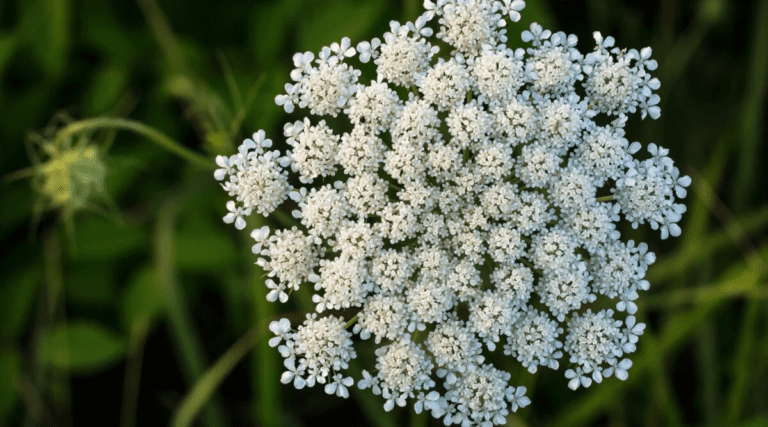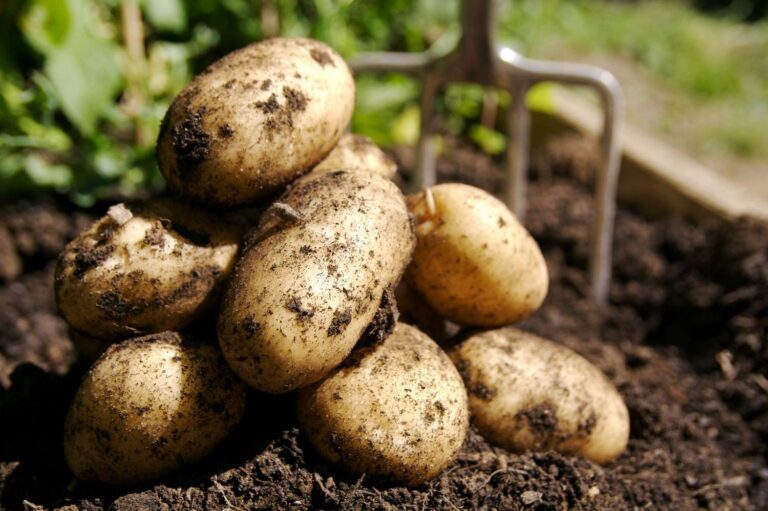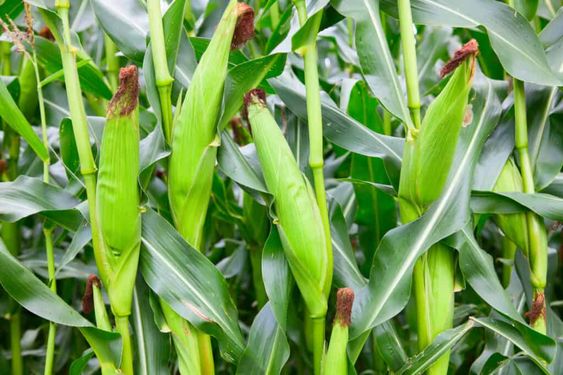Molybdenum (Mo) Nutrient Deficiencies: Causes, Symptoms, and Solutions for Your Plants
Table of Contents
Importance of Molybdenum in Plant Nutrition
Molybdenum is an essential nutrient for plants that plays a crucial role in their growth and development. While it is required in small quantities compared to other nutrients, its importance should not be underestimated. Molybdenum is necessary for plants to properly use nitrogen, which is one of the key components of protein synthesis. Without sufficient molybdenum, plants struggle to convert nitrate into ammonium, leading to nitrogen deficiency and stunted growth.
Furthermore, molybdenum is essential for the functioning of enzymes in plants. One such enzyme, nitrogenase, is responsible for converting atmospheric nitrogen into a form that plants can utilize. Without molybdenum, this enzymatic process is hindered, resulting in limited nitrogen availability for plants. This deficiency ultimately impacts the overall health and productivity of crops, leading to decreased yields and lower quality produce.

In conclusion, molybdenum plays a vital role in plant nutrition by enabling efficient nitrogen utilization and enzyme activity. Its absence can have detrimental effects on plant growth and health, affecting crop yields. As gardeners and agricultural professionals, it is important to recognize the significance of molybdenum in plant nutrition and ensure that plants have access to adequate levels of this essential nutrient.
• Molybdenum is necessary for plants to properly use nitrogen, a key component of protein synthesis.
• Without sufficient molybdenum, plants struggle to convert nitrate into ammonium, leading to nitrogen deficiency and stunted growth.
• Molybdenum is essential for the functioning of enzymes in plants, such as nitrogenase.
• Nitrogenase converts atmospheric nitrogen into a form that plants can utilize.
• Without molybdenum, this enzymatic process is hindered, resulting in limited nitrogen availability for plants.
• The absence of molybdenum can have detrimental effects on plant growth and health, ultimately impacting crop yields.
• Gardeners and agricultural professionals should recognize the significance of molybdenum in plant nutrition and ensure adequate levels are available.
Understanding the Role of Molybdenum in Plant Growth
Molybdenum may be a trace element, but its role in plant growth and development is crucial. This micronutrient is essential for several key enzymatic reactions that are necessary for plant metabolic processes. One of the critical functions of molybdenum is its involvement in nitrogen metabolism. Molybdenum-dependent enzymes, such as nitrate reductase and nitrogenase, play a vital role in converting nitrogen gas into usable forms for plants, such as nitrate or ammonia.
Additionally, molybdenum is involved in the synthesis of various compounds, including phytohormones and vitamins, which are essential for overall plant health. For example, molybdenum is required for the production of abscisic acid, a phytohormone that regulates plant growth, development, and stress responses. Molybdenum also contributes to the biosynthesis of ascorbic acid (vitamin C), which acts as an antioxidant and plays a crucial role in various physiological processes within plants.

Without adequate molybdenum, plants may experience stunted growth, reduced vigor, and poor overall health. Deficiencies of molybdenum can also lead to impaired nitrogen metabolism, resulting in a decrease in the synthesis of amino acids and proteins. This, in turn, can limit the plant’s ability to carry out essential biochemical reactions and adversely affect yield and quality.
Understanding the role of molybdenum in plant growth is crucial for optimizing crop production and ensuring plant health. By recognizing the significance of this micronutrient and its impact on various metabolic pathways, growers and garden enthusiasts can take proactive measures to provide plants with sufficient molybdenum, thereby promoting optimal growth, development, and overall productivity.
Common Causes of Molybdenum Deficiencies in Plants
Molybdenum deficiencies in plants can occur due to a variety of common causes. One primary factor is the pH level of the soil. Molybdenum availability to plants is highest in soils with a pH range between 5.5 and 6.5. When the pH is too low or too high, molybdenum uptake becomes limited, leading to deficiencies. Therefore, it is crucial for gardeners to monitor and adjust the pH levels of their soil accordingly to maintain optimal molybdenum nutrition for plants.
Another common cause of molybdenum deficiencies is the presence of excessive amounts of other elements in the soil, such as sulfate or iron. These elements can compete with molybdenum for uptake by the plant roots, resulting in limited availability. Additionally, certain soil types, such as sandy soils, have a lower ability to retain molybdenum, leading to deficiencies in plants grown in such conditions. Thus, it is essential to consider the nutrient composition and characteristics of the soil to ensure that molybdenum deficiencies do not occur. By addressing these common causes, gardeners and agricultural professionals can better prevent and manage molybdenum deficiencies in plants, promoting healthy growth and maximum yield.
Recognizing the Symptoms of Molybdenum Deficiencies in Plants
Symptoms of molybdenum deficiencies in plants can vary depending on the specific type of plant and its growth stage. However, there are some common signs to look out for that can indicate a lack of molybdenum in your plants.
One of the most noticeable symptoms is the yellowing and wilting of leaves, particularly in the older foliage. This yellowing usually starts at the edges of the leaf and progresses inward, eventually leading to the complete death of the affected leaves. In some cases, the leaves may also become twisted or malformed.
Another key symptom to watch for is stunted growth. Plants lacking molybdenum often experience slow or restricted growth, resulting in smaller overall plant size and reduced yield. Additionally, the roots may appear underdeveloped or have a sparse and unhealthy appearance.
It’s important to note that while these symptoms can be indicative of molybdenum deficiencies, they can also be caused by other nutrient deficiencies or environmental factors. Therefore, it is essential to conduct a thorough soil analysis to confirm the presence of molybdenum deficiencies before implementing any corrective measures.
Impact of Molybdenum Deficiencies on Plant Health and Yield
Molybdenum is an essential micronutrient that plays a crucial role in plant health and yield. Its deficiency can have a significant impact on the overall well-being of plants, leading to stunted growth and reduced productivity. When plants do not receive an adequate supply of molybdenum, they become susceptible to a range of physiological disorders, hindering their ability to perform essential functions.
One of the key consequences of molybdenum deficiencies is the disruption of nitrogen metabolism. Molybdenum is a vital component of enzymes involved in nitrogen fixation, nitrate reduction, and nitrogen assimilation. Without sufficient molybdenum, plants struggle to convert nitrogen into forms that can be utilized for vital processes like protein synthesis and chlorophyll production. This not only affects the overall health of the plants but also results in reduced yields.

Moreover, molybdenum is also involved in the activation of enzymes responsible for the conversion of inorganic phosphorus into organic forms that are readily available to plants. A deficiency in molybdenum can impede this process, limiting phosphorus uptake and utilization. As phosphorus is essential for energy transfer, root development, and overall plant growth, the lack of molybdenum can ultimately impact plant vigor and yield.
In order to ensure optimal plant health and maximize crop productivity, it is crucial to address molybdenum deficiencies promptly. By understanding the impact of molybdenum on plant health and yield, growers can implement appropriate strategies to prevent or rectify such deficiencies. Testing soil for molybdenum levels and providing plants with organic or inorganic sources of molybdenum through fertilizer application are effective approaches to overcome these deficiencies. However, it is essential to tailor the solutions to specific crop requirements and soil conditions, considering factors such as pH, soil type, and nutrient interactions.
Testing Soil for Molybdenum Levels
Soil testing is an essential step in determining the availability of molybdenum for plant absorption. By testing the soil for molybdenum levels, gardeners and agriculture professionals can gain valuable insights into the health and nutrient composition of their soil. Soil samples are collected from different areas of the garden or field and sent to a reputable laboratory for analysis. The laboratory uses specialized techniques to measure the concentration of molybdenum in the soil, which is then reported in parts per million (ppm) or milligrams per kilogram (mg/kg).
Accurate soil testing for molybdenum levels is crucial because it provides valuable information that helps in making informed decisions about the application of molybdenum fertilizers. It allows growers to determine whether their soil has sufficient molybdenum levels or if additional supplementation is required. Moreover, soil testing can help identify potential deficiencies or excesses that may affect plant growth and overall crop yield. By regularly testing the soil for molybdenum levels, gardeners and farmers can fine-tune their fertilization practices and ensure optimal nutrient balance for their plants.
Factors Affecting Molybdenum Availability to Plants
Molybdenum availability to plants is influenced by various factors that affect its uptake and utilization within the plant. One important factor is soil pH, as molybdenum availability is highest in slightly acidic to neutral soils. Acidic soils with a pH below 6.0 tend to decrease molybdenum solubility, limiting its accessibility to plants. On the other hand, alkaline soils with a pH above 7.0 can lead to molybdenum precipitation, making it less available for uptake.
Another factor that can impact molybdenum availability is the presence of other elements in the soil. High levels of phosphorus have been shown to reduce molybdenum uptake and utilization by plants. This is because phosphorus can form insoluble compounds with molybdenum, hindering its absorption. Similarly, high levels of sulfates in the soil can compete with molybdenum for uptake, as they have a similar chemical structure.
| Factor | Influence on Molybdenum Availability to Plants |
|---|---|
| Soil pH | Molybdenum availability is highest in slightly acidic to neutral soils. Alkaline soils may limit its accessibility to plants. |
| Soil Organic Matter | Organic matter helps bind molybdenum, making it more available to plants. Low organic matter can reduce molybdenum availability. |
| Soil Microbial Activity | Microorganisms play a role in converting molybdenum into forms that plants can uptake. Healthy microbial activity benefits availability. |
| Soil Texture | Sandy soils may experience leaching of molybdenum, reducing availability, while clayey soils may retain it but may limit plant uptake. |
| Competing Ions | High concentrations of certain ions, such as sulfate, can compete with molybdenum for plant uptake, affecting its availability. |
| Temperature and Moisture | Adequate moisture and moderate temperatures promote microbial activity and, consequently, the availability of molybdenum to plants. |
| Plant Species | Different plant species have varying requirements for molybdenum. Some crops are more sensitive to molybdenum deficiency than others. |
| Fertilizer Interactions | Imbalances in the application of fertilizers, especially those containing other micronutrients, can affect molybdenum uptake by plants. |
| Land Management Practices | Crop rotation, cover cropping, and other sustainable practices can influence soil health and molybdenum availability over time. |
| Water Quality | In irrigation, water quality can impact molybdenum availability. High salinity or certain water treatments may affect its availability. |
Furthermore, soil moisture levels play a crucial role in molybdenum availability. Excessive moisture or waterlogging can lead to reduced oxygen levels in the root zone, creating anaerobic conditions. Under such conditions, molybdenum becomes less available to plants, affecting their ability to take up and utilize this essential nutrient.
In summary, factors such as soil pH, the presence of other elements, and soil moisture levels can greatly influence molybdenum availability to plants. Understanding these factors is crucial for ensuring optimal molybdenum uptake and utilization, thereby promoting healthy plant growth and development.
Strategies for Preventing Molybdenum Deficiencies in Plants
To prevent molybdenum deficiencies in plants, there are several strategies that can be implemented. First and foremost, it is crucial to maintain proper soil pH levels. Molybdenum availability is highest when soil pH ranges between 6.0 and 7.0, so it is important to regularly test soil pH and make necessary amendments to ensure optimal conditions for molybdenum uptake.
Furthermore, the addition of organic matter to the soil can greatly enhance molybdenum availability. This can be achieved through the application of compost or well-rotted manure, which not only provides a source of molybdenum but also improves soil structure and fertility. Additionally, organic matter helps to retain moisture in the soil, preventing excessive leaching of molybdenum.
Another effective strategy is to pay attention to the balance of other nutrients, particularly nitrogen. High levels of nitrogen can inhibit molybdenum uptake, so it is important to maintain an appropriate balance between nitrogen and molybdenum. Regular soil testing can help determine the nutrient levels and guide the appropriate fertilizer application.
Incorporating crop rotation practices can also aid in preventing molybdenum deficiencies. Different crops have varying requirements for molybdenum, and rotating crops can help minimize the risk of nutrient depletion and enhance overall soil health. Additionally, certain leguminous plants, such as peas and beans, have the ability to fix atmospheric nitrogen, which can indirectly benefit molybdenum availability by reducing the requirement for nitrogen fertilizers.
In conclusion, preventing molybdenum deficiencies in plants requires a multi-faceted approach. By maintaining optimal soil pH, incorporating organic matter, balancing nutrient levels, and implementing crop rotation, gardeners and farmers can promote healthy molybdenum levels in their plants, leading to improved growth and overall productivity.
Organic and Inorganic Sources of Molybdenum for Plants
In order to ensure optimal growth and development of plants, it is crucial to ensure an adequate supply of molybdenum. Molybdenum is an essential micronutrient for plants, playing a vital role in various enzymatic processes. It is primarily involved in nitrogen metabolism and helps in the conversion of inorganic nitrogen into organic forms that can be utilized by plants.
Organic sources of molybdenum include materials such as compost, manure, and decaying plant residues. These sources slowly release molybdenum into the soil, making it available to plants over time. Organic sources are beneficial as they improve soil structure, enhance nutrient-holding capacity, and promote microbial activity. However, their molybdenum content may vary depending on factors such as the type and quality of the organic material used.
On the other hand, inorganic sources of molybdenum are commercially available in the form of fertilizers. These fertilizers are often formulated with specific ratios of molybdenum and other essential nutrients, ensuring precise nutrient uptake by plants. Inorganic sources provide an immediate supply of molybdenum to plants, which can be advantageous in cases of severe deficiencies or when a quick response is required. However, it is important to note that excessive use of inorganic fertilizers can lead to nutrient imbalances and environmental pollution. Therefore, it is essential to follow recommended application rates and consider the specific needs of the plants being grown.
Correcting Molybdenum Deficiencies through Fertilization
Correcting Molybdenum Deficiencies through Fertilization is a crucial step in ensuring optimal plant growth and development. Molybdenum is an essential micronutrient that plays a pivotal role in various physiological processes within plants, including nitrogen metabolism and enzyme activation. When plants suffer from a molybdenum deficiency, their overall health and productivity can be severely impacted.
To rectify molybdenum deficiencies, it is important to choose the right fertilization approach. One effective method is to apply fertilizers containing molybdenum directly to the soil or hydroponic system. The molybdenum content in these fertilizers should be carefully adjusted according to the specific crop requirements and the severity of the deficiency. It’s worth noting that molybdenum availability can be influenced by factors such as soil pH, organic matter content, and the presence of other minerals. Therefore, it is crucial to monitor these parameters and make necessary adjustments to ensure optimal molybdenum availability for plants.
In addition to direct fertilization, another effective technique for correcting molybdenum deficiencies is foliar application. This method involves spraying a solution containing molybdenum onto the foliage of plants, allowing for quick absorption. Foliar application is particularly useful when plants exhibit severe symptoms of molybdenum deficiency or when the soil conditions hinder efficient nutrient uptake. However, it is important to consider the specific crops and growth stages, as some plants may be more responsive to foliar application than others.
Proper and timely correction of molybdenum deficiencies through fertilization is vital for ensuring healthy and productive plants. It is essential to monitor the nutrient levels in the soil, conduct regular soil tests, and consult with experts to determine the correct dosage and application methods. By addressing molybdenum deficiencies promptly, gardeners and cultivators can promote optimal plant development, enhance crop yields, and ultimately, enjoy a thriving garden or agricultural endeavor.
Best Practices for Molybdenum Fertilizer Application
Molybdenum fertilizer application plays a crucial role in addressing molybdenum deficiencies in plants, ensuring their optimal growth and health. When applying molybdenum fertilizers, it is essential to follow best practices to maximize their effectiveness. Firstly, it is recommended to conduct a soil test to determine the current molybdenum levels and identify any deficiencies. This will enable gardeners to apply the correct amount of fertilizer, avoiding both under and over-application.
When applying molybdenum fertilizers, it is important to consider the timing. Molybdenum is generally most effective when applied in the early stages of plant growth, as this is when the demand for this essential nutrient is highest. However, it is important to note that the specific timing may vary depending on the crop and growing conditions. It is advisable to consult local agricultural extension officers or experts for precise recommendations tailored to your specific situation. Furthermore, incorporating molybdenum into the soil thoroughly is crucial to ensure proper distribution and availability to the plants. This can be done through techniques such as broadcasting or banding, taking care to avoid direct contact with the plant’s seeds or roots to prevent potential toxicity.
By following these best practices for molybdenum fertilizer application, gardeners can significantly enhance plant growth and health while addressing deficiencies effectively. However, it is vital to remember that molybdenum is just one piece of the puzzle in plant nutrition. A balanced and comprehensive approach that includes other essential nutrients is essential for optimal plant development. In the next section, we will delve into monitoring and managing molybdenum levels in plants, providing further guidance on maintaining healthy and productive crops.
Monitoring and Managing Molybdenum Levels in Plants
Monitoring and managing molybdenum levels in plants is crucial for maintaining optimal plant health and ensuring maximum yield. Since molybdenum is an essential micronutrient required by plants in trace amounts, it is important to regularly assess its availability and take necessary steps to prevent deficiencies or toxicities.
To effectively monitor molybdenum levels, one must conduct regular soil testing. Soil samples should be taken from multiple locations across the field or garden to get a representative analysis. Professional laboratories can provide accurate results that indicate the molybdenum content in the soil. These results can then be used to determine whether molybdenum deficiencies exist or if additional supplementation is required.
Once deficiencies are identified, managing molybdenum levels can be achieved through appropriate fertilization techniques. It is essential to choose the correct fertilizers that contain molybdenum and apply them according to recommended rates. Timing is also crucial, as molybdenum uptake is higher during specific growth stages. Regular monitoring and management of molybdenum levels in plants can significantly enhance nutrient absorption, facilitate enzymatic processes, and ultimately improve overall plant growth and productivity.
Case Studies: Successful Solutions for Molybdenum Deficiencies in Various Crops
Successful solutions for molybdenum deficiencies in various crops have been achieved through strategic fertilization and soil management practices. One notable case study focused on soybean crops in a region known for its alkaline soils. The deficiency was identified through soil testing, which revealed extremely low levels of molybdenum. To address this issue, a combination of organic and inorganic sources of molybdenum was applied to the soil prior to planting. This approach significantly improved molybdenum availability and subsequently enhanced crop yield and quality.
Another case study involved a vineyard where grapevines were exhibiting symptoms of molybdenum deficiency, such as yellowing of leaves and stunted growth. Soil analysis confirmed insufficient molybdenum levels, likely due to the high pH of the soil. To rectify the deficiency, a foliar spray containing molybdenum was applied to the grapevines during the critical flowering and fruit set stages. The result was striking: the grapevines regained their vigor, the yellowing of leaves disappeared, and the overall health of the plants significantly improved.
These case studies highlight the effectiveness of targeted molybdenum fertilization strategies in addressing deficiencies and improving crop health. However, it is crucial to note that each situation may require a tailored approach, considering factors such as soil conditions, specific crop requirements, and the presence of other nutrient imbalances. By implementing informed fertilization practices and closely monitoring plant health, farmers and gardeners can successfully combat molybdenum deficiencies, ultimately maximizing yields and ensuring the long-term vitality of their crops.
What are the common causes of molybdenum deficiencies in plants?
Molybdenum deficiencies in plants can be caused by factors such as low soil pH, high iron or aluminum levels in the soil, excessive phosphorus or sulfate levels, and certain soil types that retain molybdenum poorly.
How can I recognize the symptoms of molybdenum deficiencies in plants?
Common symptoms of molybdenum deficiencies in plants include yellowing of older leaves, stunted growth, and curled or distorted leaf edges. In legume crops, you may also observe poor nitrogen fixation and reduced seed production.
What is the impact of molybdenum deficiencies on plant health and yield?
Molybdenum deficiencies can severely impact plant health and reduce crop yields. Plants deficient in molybdenum may exhibit reduced photosynthesis, impaired enzyme activity, and poor nitrogen metabolism, leading to decreased growth and productivity.
How can I test soil for molybdenum levels?
Soil testing laboratories can analyze soil samples to determine molybdenum levels. It is recommended to collect representative samples from different areas of your field at the appropriate depth and send them to a reputable laboratory for analysis.
What factors can affect molybdenum availability to plants?
Soil pH, soil organic matter content, soil type, and the presence of other elements like iron, aluminum, phosphorus, and sulfate can all influence molybdenum availability to plants.
What strategies can be used to prevent molybdenum deficiencies in plants?
To prevent molybdenum deficiencies, it is important to maintain proper soil pH, avoid excessive phosphorus or sulfate fertilization, and ensure adequate organic matter content in the soil. Additionally, selecting molybdenum-efficient crop varieties and practicing proper crop rotation can help prevent deficiencies.
What are the organic and inorganic sources of molybdenum for plants?
Organic sources of molybdenum include manures, composts, and organic-based fertilizers. Inorganic sources include molybdenum-containing fertilizers such as sodium molybdate and ammonium molybdate.
How can molybdenum deficiencies be corrected through fertilization?
Molybdenum deficiencies can be corrected by applying molybdenum-containing fertilizers to the soil. The appropriate fertilizer type and application rate should be determined based on soil test results and crop requirements.
What are the best practices for molybdenum fertilizer application?
Best practices for molybdenum fertilizer application include proper timing, placement, and incorporation into the soil. It is also important to follow recommended application rates and avoid excessive use, as molybdenum toxicity can occur in certain crops.
How can molybdenum levels in plants be monitored and managed?
Regular plant tissue analysis can be conducted to monitor molybdenum levels in plants. Based on the results, appropriate corrective measures can be taken, such as adjusting fertilizer applications or soil amendments.
Can you provide some case studies on successful solutions for molybdenum deficiencies in various crops?
Please refer to the specific case studies mentioned in the article for successful solutions to molybdenum deficiencies in various crops. These case studies highlight practical approaches and their outcomes in addressing molybdenum deficiencies in specific agricultural scenarios.

Pallavi Gupta is a burgeoning writer at SouthElMonteHydroponics, blending her passion for data analysis with a keen interest in biotechnology. Currently pursuing a Bachelor’s in Biotechnology at Amity University, Pallavi delves into the intricacies of life sciences while gaining hands-on experience in the exciting world of data analysis. Her unique background provides a fresh perspective on hydroponic farming, as she explores the intersection of biotechnology and sustainable agriculture. Through her writing, Pallavi aims to bridge the gap between data-driven insights and innovative farming practices, inspiring others to harness technology for a greener future.







